Opinion
Why Education Must be an Essential Service: An Educator’s Impassioned Plea
An opinion article that words an educator’s point of view in education being available essentially no matter what the situation is
Published
4 years agoon
By
Kavita Anand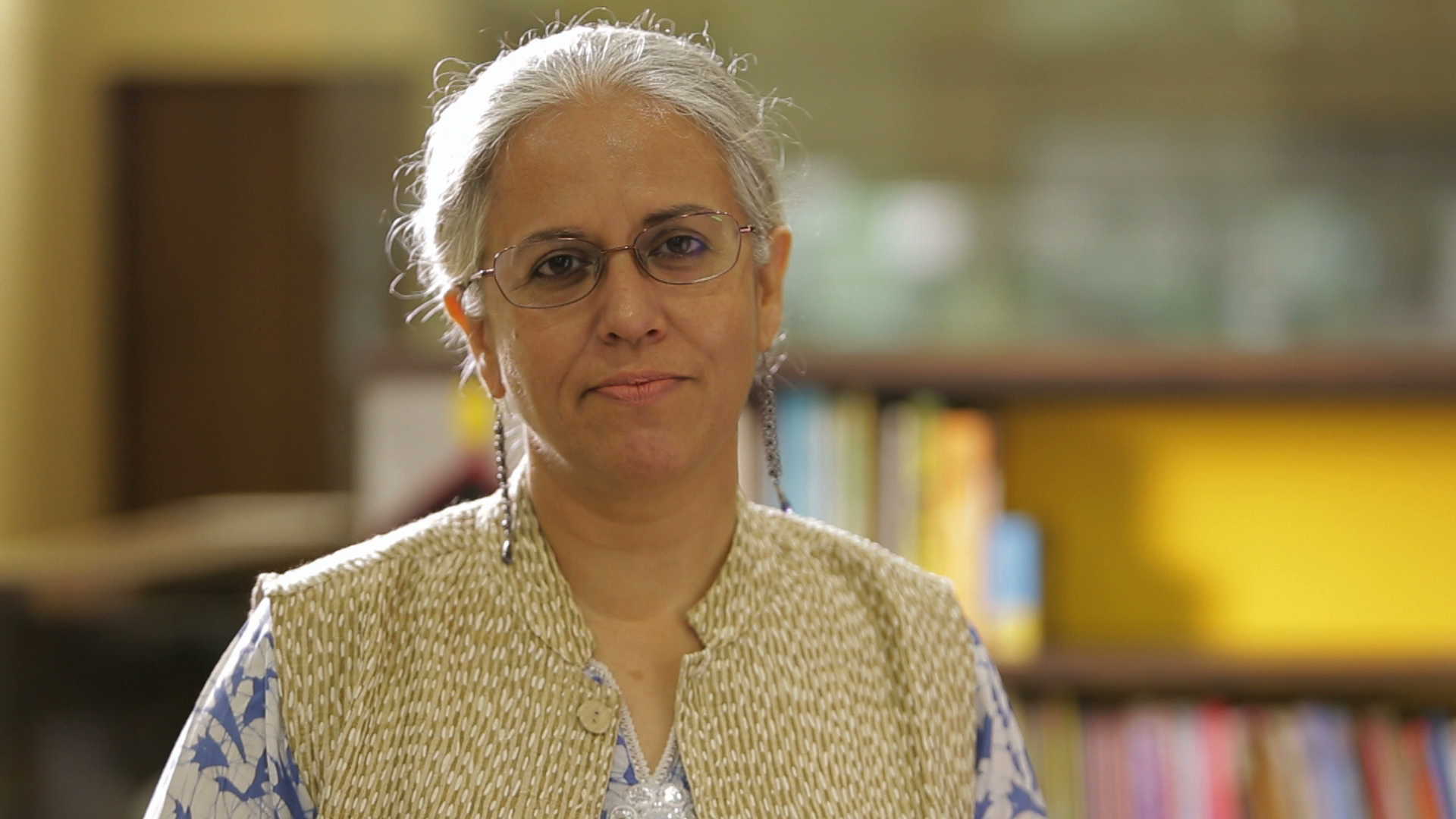
“Our students’ parents do not even have smart-phones”;
“Some students live in areas that do not have even telephone access – there is no tower”;
“Our students’ families’ have maybe one smart-phone with limited data that has to be used by the parents and shared between two, sometimes three, children”;
“The only way we can get through to our students is on phone and WhatsApp”.
These are only some of the comments from not one, but several school leaders describing their present situation during our online meetings about ‘Online Teaching and Learning’ (Adhyayan’s Eduseries) attended by school leaders and management from 50 schools across India. We hear the despair in their voices: education has been disrupted; many of their students now don’t have access to traditional classroom learning or to any learning at all. How should do their students continue their education without the required infrastructure? Can they hope that somehow the virus will disappear just as suddenly as it appeared?
The hardest thing for any human being to accept is an irreversible change. And so, teachers and leaders are struggling to imagine a world in which they may no longer have classrooms bursting at the seams, full of eager young learners hungry for knowledge and impatiently waiting to become productive, earning members of their families, most of them coming from the lower socioeconomic strata of society.
The closure of schools was sudden. Across the world, there were announcements, and within a month of the World Health Organisation (WHO) declaring the Covid19 pandemic, 91% of the world’s student population found itself at home. In India, schools had less than 24 hours to figure out how to respond to the closure notice. School leaders, who were used to government orders were faced with the need to make independent instant decisions – Go online? Use an app? Let go? Lie low? And this decision had to be made in the absence of any definitive information – just how long would the lockdown last? A week? a fortnight? Would it be like the usual school closures for pollution or a heatwave?
By the end of March 2020, 32 crore students in India lost access to education for an indefinite period of time. An access that had been enabled with the greatest difficulty over that last 40 years, by incrementally creating the second-largest school system in the world that provided every child with a primary school within a kilometre from their homes.
All 1.5 million schools in India closed their gates. A handful of private schools in every metro city went online immediately. They could. Others followed their lead over the next three weeks. They could too. By mid-April, along with the extension of the lockdown to May 2020, The Ministry of Home Affairs (MHA) ordered that all schools would have to go online. Could they?
With hundreds of years of face-to-face didactic teaching in our DNA, public and private schools are forced to accept a painful reality: they have no choice but to prepare for and deliver, a distance learning model. Their decisions on how quickly they prepare are going to be critical for the future of the students, and the country. This is especially so given how the economy, globally, is already taking a massive hit due to the Coronavirus clampdowns. Jobs that were already too few before the Covid era are going to be even fewer. Life is going to be really difficult for most who will graduate this year, and that has nothing to do with the difficulty of no examinations.
This situation is completely different from 70 years ago when we began to formulate a system that favoured a few students going to school. At that time our problem was defined as one of low access. Over the last 50 years, we developed nation-wide programmes to get most of our children into primary school, only to realise that we were losing them by the 1st, 5th and then the 8th grades. The Right to Education Act 2009 brought in a focus on the quality of education provision. The Annual Status of Education Report (ASER) reports continued to reveal the agonising impoverishment in the academic achievement of the students in spite of – and in my view, due to – a narrow examination focus in schools. Our policymakers acknowledged that the problem lay in the quality of the schooling experience. Consultations were held to develop a bold new education policy that would address the needs of the second largest and youngest population in the world. We appeared to be on the cusp of big transformations in the school system.
At this critical juncture, Covid19 swept like a malicious twist in the tale into an unprepared world and an even less prepared India. Governments worldwide scrambled to understand the implications of this illness seeking to buy time to flatten the curve with the singular aim to save their citizens and make it possible for their healthcare systems to cope with the burgeoning numbers. A list of essential services was made. This list identified what was really important in a state of extreme emergency. Sadly, education didn’t make that list in India. In other countries, it did. New Zealand rapidly provided teacher training to enable teaching staff and devices to students who did not have them. Singapore too provided iPads and laptops to their children if they could not afford one; children who could not stay at home and undertake distance learning are still able to go to school with all the social distancing protocol in place – every child’s education process is accounted for, even this 1% of the student population who either cannot afford digital devices and data or their parents are serving the nation as part of essential services. Ministry of Education staff is seen going to work in Singapore as they come under essential services. Every country that could, has transitioned to online teaching and learning. The governments are creating special budgets and education frameworks to facilitate this new learning model where access to digital technology and competent teachers to keep the students constructively occupied is the new normal. These governments realised a while back that this investment is urgently needed as the Covid catastrophe is not a transient, short-term malady. If not Covid, it could be another.
In India, it was every school for itself. If the school was a public school, it just closed like it would for the holidays or a bandh (a mass call – usually politically motivated – to stop work across the country or a state to protest against a crisis of sorts). Of the 300,000 or so private schools, in our guestimate, less than 1% went online the day after the lockdown was announced. The rest waited, confused, uncertain, directionless. Gradually, as school managements, leaders and governments learned more about the impact on most affected countries, they began to face the possibility that education, as they knew it, wasn’t going to be back in the current or next academic year.
Students like 14-year-old Misha who lives in Mumbai has been online for close to a month. She is aware that she is privileged. So much so that she says, “I wish my school didn’t make such an effort to teach us. It would be fine to let us chill out a bit.” She has her own device and adequate data. She also has teachers who have been provided devices and data by the school, and have been trained – or in some cases, have trained themselves – to be able to reach their students with planned lessons and a variety of tools. These students, as well as their parents and teachers, speak of synchronous and asynchronous learning. Misha spends an hour at the least, researching for a variety of assignments on the internet. You can have a conversation with her about academic honesty, “metacognition” and “data security”. Her seven-year-old sister discusses a project on rainforests with her parents who offer to help find material from authentic websites.
Further away in a school in Satara, Maharashtra, nine-year-old Nitin and his 13-year-old sister Surabhi argue over who gets access to the families the only phone. They are lucky to be part of the 41%in India who has, although limited, devices and data. Nitin’s teacher has a smartphone and a laptop that is five years old and slows down with long hours of use. Surabhi’s teacher has been calling her and sending messages, short videos and links to YouTube videos that can help her revise for her exams that may never be held. Nitin gets worksheets, puzzles and math problems every day and sends back the completed assignments through photographs. Their parents are busy trying to make the best of their tattered lives. They are sympathetic but have a limited ability to help their children. Their father's business has closed and their mother got laid off from her job. Their parents’ anxieties are infecting them more than Covid-19.
It only gets worse. Nine-year-old Shalu’s family in the Khunti district of Jharkhand belongs to the 57% who neither possess a smartphone nor have data. A laptop is unheard of in their village. In fact, for most of the time, they do not receive a reliable phone signal. Her teacher does have a smartphone, and sometimes, if he stands near his gate and holds his phone up high enough, he even gets a 3G signal. That doesn’t help him much since he has no way of reaching his students, most of whom, like Shalu, have no devices or, perhaps, the most basic of devices. Shalu and her parents have never sent or received an SMS. Her parents are unable to help her with any schoolwork, and in the current circumstances, are more worried about getting a daily wage somehow, somewhere, so that they can buy food for themselves and their families. Her aunts, who had migrated to Mumbai, tried to come back “home”; they were last heard of eight days ago. One neighbour who did make it back was asked by the village to wait outside till they were sure that he hadn’t brought the virus with him. Shalu worries about what may happen once he gets home.
There are millions of children like Shalu, Nitin and Surabhi who are in the low-cost private school and public school systems. The parents deny themselves in order to pay for the private schooling of at least one of their children – could be two or three or more. When they look to the future, what do they see? How do we look at their present, first? Next, how do we look into the future to check their situation in the coming years? What equal opportunity can we offer them without devices, data or a teacher cadre that is professionally equipped?
The question India is faced with today, is: What is our empathy quotient? How interested are we in the well-being of every single child? The India Internet 2019 report says only 36% of the population has access to the Internet. In the cities, it is 51% but in rural India, only 27% of the population has digital access. 69% of Delhi’s population contrasts sharply against Odisha’s 25%.
There is a very large difference in the learning available to Misha, whose parents have provided her with a laptop and a broadband connection, versus Nitin and Surabhi, whose parents are not able to give them more than a few hours on a shared device which needs to be powered with precious data they can ill-afford. But an even more miserable plight than that is that of Shalu: no access, no device, no teacher, and maybe, not enough electricity to power her television.
What are we going to do in order to provide Nitin, Surabhi and Shalu with an education that will equip them and millions of others like them to live a life of dignity? Will Misha’s education help her become aware of her privilege and so more responsible for the wellbeing of the others? Will Shalu’s parents send her to school when the virus has been eradicated for her and her family? Will she want to return to school? Or will she be an extra hand in earning a living?
This is a call to action for government and social development organisations that have both been working at the grassroots to join hands and use design thinking principles to ensure all our resources are carefully managed and no child gets left out. We must support our education system to become the change-makers using the following guiding principles:
- School leaders ensure the professional development of their teachers on blended learning and providing social-emotional and cognitive support to students
- Every teacher embrace their ability to influence the well-being of their students and ensure their voice is heard
- Every administration, distribution network and communication channel accept education as a priority along with health and food security.
Education must be India’s priority, along with other core areas such as healthcare for which crores of rupees are being allocated today because Covid19 is here. We must ensure that high-quality education is listed as an essential service to which every child is entitled.
Kavita Anand is the co-founder of Adhyayan Quality Education Services Pvt. Ltd. and Adhyayan Quality Education Foundation. Adhyayan is a movement and network of Indian and international educators, dedicated to systemically improving the quality of leadership and learning in schools. Adhyayan has worked with 7000 schools across 26 states in 11 languages, impacting more than a million students.
Special thanks to Nandini Nayar Sharma, Sagittaire Consulting for research and editing of the article.
REFERENCES
- Adhyayan Eduseries for School Leaders, April 2020, Adhyayan Quality Education Services Pvt Ltd. (www.adhyayan.asia)
- http://uis.unesco.org/en/blog/nurturing-education-home-midst-health-crisis-how-sdg-indicator-4-2-3-can-help-guide-where-more
- UNESCO Institute for Statistics data.
- https://www.mha.gov.in/sites/default/files/MHA%20order%20dt%2015.04.2020%2C%20with%20Revised%20Consolidated%20Guidelines_compressed%20%283%29.pdf
You may like
-


Ideology Over Individuality: Encouraging Open Dialogues
-


One Size Doesn’t Fit All: The Need for Personalised Learning
-


Vice President of India Inaugurates The Kulish School of Patrika Group
-
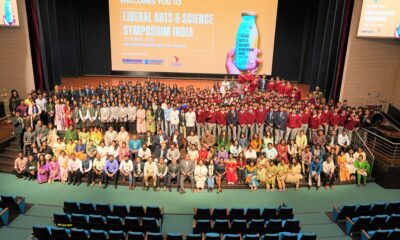

Empowering Education: LASSI 2024 Concludes with Success and Inspiration
-


Vape Awareness: Mist of Misconception
-


Seasoned Educator Nilam Sharma Takes Helm at The Vedanya School
-
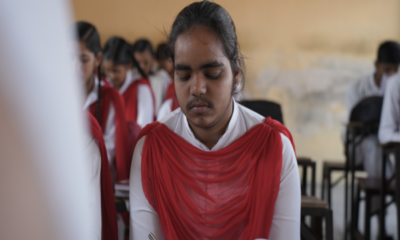

Beyond Appearances: Prachi Nigam’s Triumph and The Pressures of Appearance-Based Bullying in Schools
-
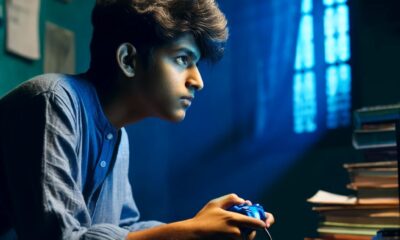

Beyond The Screen: Virtual Battles, Real Consequences
-
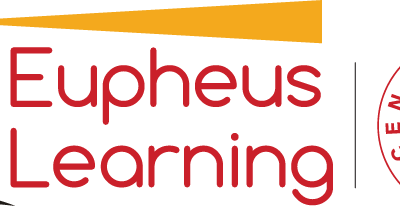

India’s Eupheus Learning Recognised in TIME’s World’s Top EdTech Rising Stars of 2024
-


Kerala Sets National Benchmark with AI Training Programme for 80,000 Teachers
Education
Beyond Appearances: Prachi Nigam’s Triumph and The Pressures of Appearance-Based Bullying in Schools
Published
1 week agoon
April 29, 2024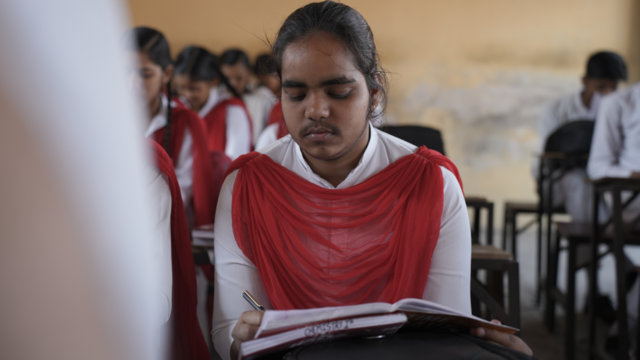
The news of Prachi Nigam, a diligent 10th UP Board Topper, unleashed a disturbing chapter in the history of our society. Despite her unquestionable academic talent being the main topic of a discussion it was superseded by the inappropriate emphasis on her appearance. These events clearly underline the intricate and destructive beauty standard that plague the learning institutions.
It perhaps resonates with the fact that, in the process, we form these gigantic LED screens of illusory beauty standards, which subsequently hover over our young, leaving long shadows behind their achievements. Even if they keep advancing up the ladder of academic strength, their way at the top is checked through the view of how attractive they are. The risk of humiliation due to poor marks and failing an exam is unavoidable. The true woe Prachi has is the desire for anonymity despite her impressive winning activities, which emphasises how emotional hearts of young people can be dysfunctional from such pressures.
Time has come for all of us, as a society, to shape direction which mostly depends on whether empathy has the right place in our classrooms or not. Let this be a lighthouse to the teachers to build suitable defences of comfort around the children thus, no kid should be caught hiding from scrutiny in the shadows. Teachers are doing not only a transmission of knowledge but also establishing an arena where jokes and laughter is shared with no one’s dignity being mocked. When a person makes fun of someone for his/her looks, it should not have a tolerance or a laughter of agreement but condemnation with the sober reminder of respect and tolerance.
The heart of our education philosophy must be the acceptance that the human body is the norm, in its different shapes, and be explained that those changes in adolescence, which are taken as anomalies, are just threads in the rich diversity of our human experience. The burden exists equally in both teaching our young boys that hair is a natural part of a woman’s presence and passing judgement or hearsay based on the absence of hair is unjustifiable, besides disrespectful.
Creating a monument for our schools is to convert them into sensitive meeting places where each child can grow up in freedom without the worry of being dug out for their uniqueness. These classrooms nurture compassion from which the saplings of mature citizens emerge; their spiritual vision awakening the logical perception which glimpses beyond obvious matters. However, beauty is a kaleidoscope, and for our brains, the time to adjust to its actual spectrum is right at hand.
When building up such an environment, we do not just educate students, we plant the seeds of change in a world where people are cherished not by the size and shape of their bodies but by their uniqueness and achievements. The story of Prachi standing fearlessly up to the rushing flood of hate, should sound in the corridors of every school, it would be among the strongest lessons in fortitude and the ability to endure as an example.
We are not merely shaping the students of today but creating a world where every young Prachi will find a space to fly free from unwarranted prejudices. As educators, students, and members of this complex society, we need to topple the divergent walls of superficial standards and in their place to grow a garden which allows every flower, despite how it differs from others in terms of size, colour or shape, to be valued for the gift that it brings to the world. It won’t be until after when we can say we have not failed our children, only when we can tell that we are proud of having brought up not just scholars, but decent human beings.
Education
Unsupervised Explorations: Rethinking Student Trips
Published
2 weeks agoon
April 23, 2024
In a tale of youthful exuberance and unforeseen peril, six students from Class 12 embarked on a journey to Goa, a rite of passage celebrated by many as a final hurrah before stepping into adulthood. With permission from their parents, who were perhaps too trusting or caught up in their own lives, the group set out with excitement pulsing through their veins. Upon landing, they were greeted not just by the balmy Goan air but by three massive SUVs, reserved for their adventure—a promise of freedom and the thrill of the open road.
Their accommodation was a sprawling villa, costing a small fortune at 70,000 INR per night, equipped with private pools and luxuriously appointed rooms. It was a palace for kings and queens of the night, a haven for six souls intertwined in the throes of adolescence. Three rooms for three couples, the arrangements were a testament to their intentions, seeking privacy and moments of unchecked passion under the guise of a holiday.
As the days unfolded, the allure of Goa’s vibrant nightlife beckoned. The students, drawn to the magnetic pull of music and dance, found themselves in the heart of the party scene, clubbing into the early hours. It was here, amidst the revelry, that they encountered individuals with sinister motives—drug peddlers who saw not just customers but vulnerable targets in these wide-eyed teenagers.
Swept up in a desire to appear worldly and sophisticated, the group made a decision that would pivot their holiday from a dream to a nightmare. They purchased drugs, a choice made without foresight or understanding of the consequences. Their naivety became their downfall when the police, vigilant and unyielding, caught them in possession of these illegal substances.
The aftermath was swift and severe. The teenagers, underage and unprepared for the legal ramifications, were thrust into the cold reality of juvenile custody. Their parents, irrespective of their affluence, were faced with a situation no amount of money could easily resolve. Frantic and fearful, they did everything within their power to secure their children’s release, confronted with the harsh truth of their offspring’s actions.
This story, inspired by real events, serves as a stark reminder of the dangers lurking behind the facade of freedom and the allure of adulthood. It raises pressing questions about the role of guardianship and parental oversight in the lives of teenagers standing on the precipice of adulthood.
Could this grave misstep have been avoided had there been a local guardian present, a guiding light in unfamiliar territory? Would a more vigilant approach from the parents, a pause to question and understand, have rewritten the story’s conclusion? This incident forces us to confront the reality of our responsibilities towards our youth—not just to grant them freedom but to equip them with the wisdom to navigate it. As we ponder the delicate balance between trust and caution, we must ask ourselves: At what cost does freedom come, and are we doing enough to ensure that the journey into independence does not lead to a fall from grace?
To read more on such trends that need to be called out and #un-trended, head to the April issue of our magazine here.
Education
Pricey Presents, Precocious Pressures: The Cost of Gift-Giving to Children
Published
2 weeks agoon
April 22, 2024
In the intricate fabric of contemporary society, entwined with the threads of status and materialism, the ritual of gift-giving to young children has morphed into a showcase of wealth and social stature. This tale shines a light on the ripple effect of such extravagance through the eyes of Ayaan’s peers, young souls caught in the whirlwind of competition and comparison.
When Ayaan arrives at school with sneakers worth 80k or brandishes the latest iPhone as casually as a textbook, it’s not just a display of wealth; it becomes a benchmark, setting aflame a cycle of envy and desire among his classmates. The children, innocent in their yearnings, unknowingly step onto a treadmill of materialistic pursuit, urging their parents towards the edge of financial prudence in a bid to not fall behind.
The spectacle reaches its zenith when Ayaan, in a display of unparalleled opulence, gifts iPods as return gifts on his birthday. An act, while grand, sends shockwaves through his circle, planting seeds of expectation and entitlement in young hearts. Parents, caught between nurturing happiness and teaching value, find themselves navigating a treacherous path of societal pressure and fiscal responsibility.
As each child in Ayaan’s orbit feels compelled to mirror his lavish lifestyle, the essence of childhood camaraderie is shadowed by the looming spectre of materialism. Friendships, once untainted by the world’s complexities, now bear the weight of economic disparity. The playground becomes a silent witness to conversations not of games and dreams, but of gadgets and brands, a testament to a culture veering away from the innocence of youth.
The impact extends beyond the tangible, chipping away at the pillars of equality and mutual respect. As peers vie to outdo each other in a race fuelled by parental indulgence, the divide widens not just in their possessions but in their perceptions of self-worth and success. The classroom, a microcosm of society, reflects a disturbing trend of measuring one’s value through the lens of ownership and extravagance.
This narrative, while centred on Ayaan and his affluent displays, casts a spotlight on the broader societal implications of such gift-giving practices. It prompts a critical examination of the values we impart to our children and the world we aspire to create for them. As we navigate this maze of materialism and the stories of Ayaan and his peers unfold, they serve as a mirror to our collective conscience, urging us to reconsider the legacy we wish to leave behind. The question that beckons us to reflect is profound: Are we raising a generation that values possessions over people, status over substance?
To read more on such trends that need to be called out and #un-trended, head to the April issue of our magazine here.
Education
Addressing the Transition From Classrooms to Coaching: The Shifted Focus
Published
3 weeks agoon
April 19, 2024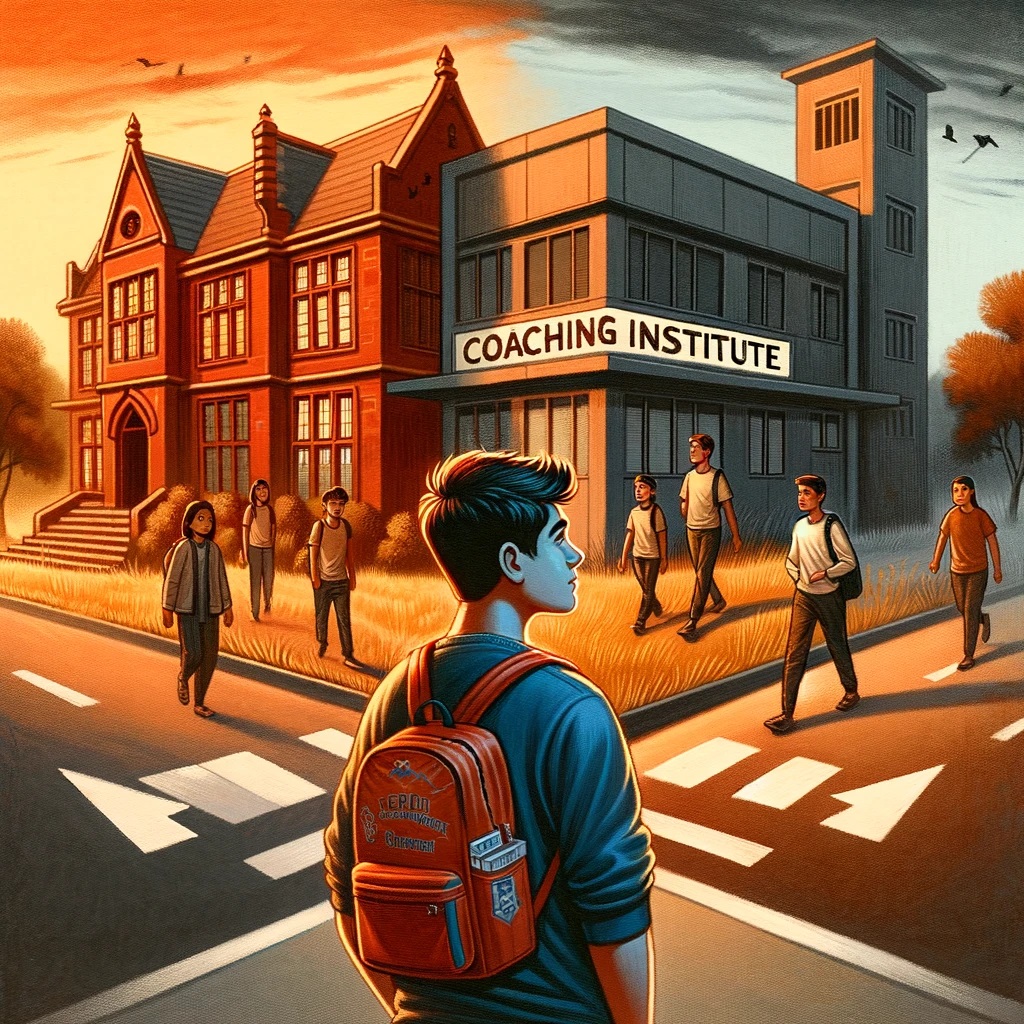
In the bustling academic corridors of Woody High, nestled amidst the verdant suburbs of a thriving city, the story of Vikram, a bright and ambitious student, begins to unfold. Vikram, like many of his peers, found himself at a crossroads as he stepped into the crucial years of 11th standard, caught between the traditional path of school education and the burgeoning trend of dummy admissions.Classrooms to Coaching: The Shifted Focus
The lure of coaching centres, promising a direct route to success in competitive exams, became increasingly irresistible. Vikram watched as one by one, his classmates traded the familiar setting of classrooms for the rigorous regimen of coaching institutes. The promise was simple: a focused preparation tailor-made for cracking entrance exams, seemingly a pragmatic choice in an increasingly competitive world.
However, this exodus from school to coaching centres revealed a deeper malaise within the education system. Schools, once vibrant communities of learning and growth, had slowly morphed into factories churning out board exam results. The holistic development of students, their readiness for the world beyond the gates of Woody High, seemed to have taken a backseat to the singular pursuit of academic scores.
Vikram’s decision to join the coaching bandwagon was met with a mix of hope and apprehension. The initial months were a blur of new concepts, relentless practice sessions, and the constant pressure to outperform. Yet, as the novelty wore off, Vikram found himself yearning for the missed debates in history class, the group projects in science, and the sense of belonging that came with being part of the school community.
The turning point came when Vikram, amidst his packed coaching schedule, volunteered for a community project. The experience was eye-opening, highlighting the gap between the rote learning at coaching centres and the practical knowledge and soft skills required in the real world. It dawned on Vikram that education was not just about clearing exams but about building a foundation for life.
As Woody High grappled with the dwindling numbers of students in its classrooms, it became evident that a change was needed. Schools had to evolve beyond their board-result orientation, integrating curriculum with real-world applications, fostering critical thinking, and preparing students for life’s myriad challenges.
The story, based on real incidents, raises the question that looms large, as we reflect on the narrative of #ClassroomOrCoaching: How can schools reclaim their role as sanctuaries of holistic education, ensuring they remain relevant and valuable in the lives of students like Vikram, not just as conduits to board results but as launchpads for their futures?
In a world where the race to the top often overlooks the essence of learning, can we afford to let coaching centres replace the rich, multifaceted experience of school education?
To read more on such trends that need to be called out and #un-trended, head to the April issue of our magazine here.
Education
Questioning the Trend of Lavish Farewells- #FarewellFiasco
Published
3 weeks agoon
April 18, 2024
Imagine your child is attending their Year 12 farewell. It is a night they have been looking forward to, marking the end of their school journey and the start of something new. The atmosphere is charged with excitement, laughter, and the bittersweet feeling of saying goodbye. As the evening wraps up, the buzz does not fade; it shifts to the streets. A group of friends, adrenaline still running high from the night’s celebrations, decide to extend the farewell with a car rally. Among them is Aarav, driving his family’s SUV, a vehicle too powerful for his inexperienced hands.
The city sleeps as the convoy of cars snakes its way through the deserted streets, the hum of engines breaking the night’s silence. Aarav, feeling the thrill of the chase, pushes the pedal down, the speedometer needle climbing higher and higher. His friends, in the car beside him, cheer him on, the competition heating up as they approach the ring road. It is a wide stretch, seemingly perfect for their race, away from the prying eyes of the night.
But in a heartbeat, the night turns tragic. Aarav loses control. The SUV, now a projectile, careers off the road, skidding and tumbling for what seems like an eternity. The aftermath is a scene of devastation. The vehicle, unrecognisable, lies in ruins, and silence once again claims the night, now heavy with the weight of consequences.
By the time the first light of dawn touches the sky, the police are at the scene, piecing together the events. The accident leaves one young soul lost to the night and another battling for life in hospital. Questions swirl around the circumstances that led to this moment. Was it the rush of speed, a momentary lapse in judgement, or something more? The community is left reeling, grappling with the reality of a celebration turned catastrophe.
As the investigation unfolds, the police sift through CCTV footage, trying to trace the sequence of events and the other vehicles involved. Speculations arise that the tragedy was the result of a high-speed race gone wrong. Amidst this, a family mourns the loss of their child, a farewell that was meant to be a celebration now a memory marred by loss and regret.
This story, though actual, has been anonymized to protect the identity and privacy of the student involved. It highlights a critical issue prevalent in communities worldwide: the trend of extravagant farewells escalating into dangerous activities, posing threats not only to the students but also to society as a whole.
As we reflect on this story, it compels us to ask: Is the pursuit of a grand goodbye worth the price of a life? How do we balance the celebration of milestones with the responsibility we owe to our children’s safety and to each other? This tale, inspired by true events, leaves us pondering the traditions we uphold and the lessons we impart to the young minds we are nurturing for the future.
To read more on such trends that need to be called out and #un-trended, head to the April issue of our magazine here.
Education
Reviving School Education: Countering the Coaching Centre Dominance
Published
4 weeks agoon
April 11, 2024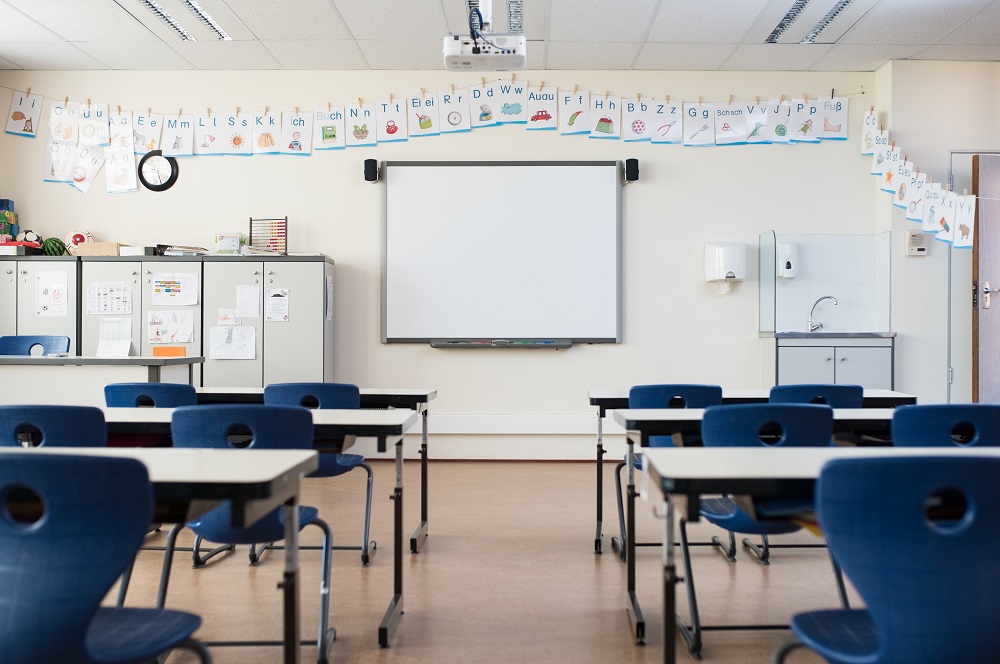
In recent years, a troubling trend has emerged within the educational landscape: the rise of “Dummy Admissions,” where students formally enrolled in schools are effectively abandoning the classroom in favour of coaching institutes. This phenomenon, particularly prevalent from the 11th standard onwards, sees students dropping out of school to prepare for competitive exams under the tutelage of coaching centres, which were originally intended to supplement, not supplant, school education.
The shift has been stark. Coaching, once a support system, has transformed into a parallel education industry, with some arguing it overshadows the broader developmental benefits of traditional schooling. This evolution poses a critical question: How can schools reclaim their role not just as preparatory grounds for board exams but as sanctuaries of holistic education that truly prepare students for life?
The Diminishing Role of Schools
The primary role of any educational institution is to foster an environment conducive to learning, curiosity, and personal growth. Schools are meant to be arenas where young minds receive a balanced education — academically, socially, and emotionally. However, the allure of scoring top marks in competitive exams has tilted the focus sharply towards rote learning and intensive exam preparation, often at the expense of holistic development.
The Coaching Conundrum
Coaching centres operate with a laser focus on results, primarily targeting competitive exams like the JEE, NEET, and others. This narrow approach prioritises immediate academic results over long-term learning and personal development. Students, driven by the pressure to excel in these high-stakes environments, often find themselves estranged from the broader educational experiences that school offers — experiences that are crucial in shaping well-rounded individuals capable of adapting to life’s varied challenges.
Reclaiming the Sanctuary of Education
For schools to regain their central place in the educational journey of students, they must evolve to meet the diverse needs of their students. Here are a few strategies that could help schools reassert their relevance:
- Integrated Curriculum: Schools could integrate aspects of competitive exam preparation into their regular curriculum, thus reducing the need for external coaching. This would allow students to prepare for exams without missing out on the broader educational offerings of the school.
- Focus on Skill Development: Beyond academic prowess, schools should enhance their focus on developing critical life skills such as critical thinking, problem-solving, creativity, and communication. These skills are crucial for success in professional and personal life and can make schooling more relevant.
- Counselling and Support Services: Enhanced counselling services can help students navigate their educational pathways and career choices effectively. Schools should equip students with the tools to make informed decisions about their futures.
- Experiential Learning: Schools must emphasise experiential and contextual learning, making education a more engaging, practical, and enjoyable experience. This can be achieved through project-based learning, internships, and real-world problem-solving scenarios.
- Parental Engagement: Engaging parents in the educational process and informing them about the importance of a balanced education can help shift the focus from mere exam preparation to overall development.
- Promotion of Arts and Sports: Encouraging participation in arts, sports, and other co-curricular activities can enrich students’ educational experience and support the development of a wide range of skills.
As the educational landscape continues to evolve, the challenge for schools is not just to prepare students for exams but to prepare them for life. In a world increasingly dominated by coaching centres, schools must innovate and broaden their educational offerings to ensure they remain valued not just as conduits to board results but as launchpads for the futures of students. It’s about striking a balance between academic rigor and holistic development, ensuring that schools remain the nurturing grounds for the leaders of tomorrow.
To read more on such trends that need to be called out and #un-trended, head to the April issue of our magazine here.
Education
Rebalancing the Scales: The Urgent Call for Humanities in STEM-Dominated Curricula
Published
1 month agoon
April 4, 2024
In today’s educational landscape, the scales are heavily tipped towards Science, Technology, Engineering, and Mathematics (STEM) fields, a trend that has sparked a crucial dialogue on the role of humanities in shaping well-rounded individuals. This discussion is not just academic; it reflects a deeper question about the kind of future we envision for our society and the individuals who will lead it.
Extra focus on STEM subjects is a broader issue: the sidelining of humanities in educational institutions, which reduces the vast expanse of human knowledge and creativity to mere footnotes. Students struggling to find value and meaning in a curriculum that doesn’t cater to their passion for history, literature, and the arts underscores a significant gap in our education system.
Recent studies highlight this imbalance. According to the National Foundation for Educational Research, students exposed to a balanced curriculum that includes humanities alongside STEM subjects exhibit a higher level of critical thinking, empathy, and adaptability. These skills are crucial not just for personal development but for navigating the complexities of today’s global society. Furthermore, a report by the American Academy of Arts and Sciences on the state of the humanities in higher education points out that students who engage in humanities courses are better prepared for leadership roles, showcasing the intrinsic value of these disciplines in cultivating informed and compassionate leaders.
Despite these findings, the preference for STEM subjects remains dominant, driven by the perception of better job prospects and economic benefits. This preference has led to a significant reduction in the availability and quality of humanities education in many schools. The scarcity of staff for humanities subjects and the absence of facilities like language labs not only hinder students from pursuing their interests but also limit the educational community’s ability to foster a diverse set of competencies among its students.
The consequences of this imbalance are far-reaching. By prioritising STEM at the expense of humanities, we risk nurturing a generation equipped with technical skills but lacking in the critical thinking, empathy, and cultural awareness that are equally vital in addressing the challenges of our increasingly interconnected world. This dichotomy raises a pressing question: are we merely training the next generation of technicians and engineers, or are we committed to nurturing well-rounded individuals who can contribute meaningfully to society?
The journey towards a more balanced educational approach begins with acknowledging the value of all disciplines. For students, and indeed for our future society, the richness of education lies not in the depth of knowledge in a single field, but in the breadth of understanding across the spectrum of human experience. As we stand at this crossroads, the choice is ours: will we continue down the path of narrow specialisation, or will we embrace the holistic education that our future leaders deserve?
Education
Palette of Possibilities: Nurturing Creativity in Schools through Modern Art
Published
1 month agoon
April 4, 2024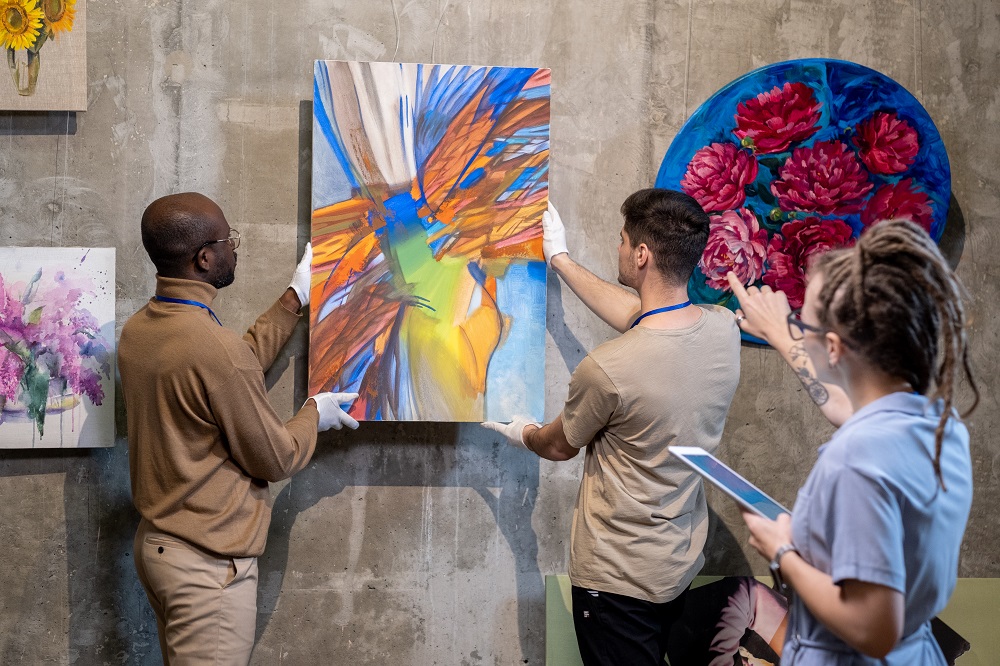
In the sphere of education in India, modern art often seems to be overlooked, relegated to the periphery of the academic spectrum. As a student who has traversed the diverse landscapes of Indian education, from traditional classrooms to the unique environment of boarding schools and experiential learning hubs, I find myself yearning for a more comprehensive exposure to the world of artistic expression, particularly modern art. The need for schools to step up, take responsibility, and actively involve students in art events is paramount, as it not only opens doors to diverse career possibilities but also cultivates a rich tapestry of creativity that can shape the coming generations.
As children, artistic expression often comes naturally. Young minds are unburdened by self-doubt or the constraints of societal expectations. Pablo Picasso quoted, “Every child is an artist. The problem is how to remain an artist once we grow up,” encapsulates a poignant reflection on the innate creative capacity inherent in every individual. Modern art is not just about canvases and paint; it is a dynamic force that ignites imagination, critical thinking, and a deeper understanding of the world. Yet, in the rigid framework of Indian education, the appreciation for modern art is often confined to the sidelines, overshadowed by the emphasis on conventional subjects like science and economics. But here’s the societal humor in this drama – we’re living in an era where a meme can garner more attention than a paragraph from a history book. The world craves creativity, and schools need to acknowledge that modern art is not just a rebellious teenager’s way of expressing angst; it’s the language of innovation and adaptability.
One of the primary reasons why schools need to prioritize modern art is its unparalleled ability to nurture creativity. In a world that is rapidly evolving, fostering creative thinking is essential. Modern art challenges students to think beyond the conventional, encouraging them to question, experiment, and envision new possibilities. By integrating modern art into the curriculum, schools provide a platform for students to express themselves in ways that transcend the boundaries of traditional subjects.
Expressive classes, extending beyond the conventional painting and sketching, open up avenues for students to convey their feelings using colors, drawings, and various artistic mediums. These sessions serve as a sanctuary where students can explore the depths of their emotions and thoughts, transcending the limitations of verbal communication. By tapping into the world of abstract expressionism, students are given the freedom to communicate through art, allowing for a richer and more nuanced understanding of their inner selves.
Art events play a pivotal role in this process. Unfortunately, such opportunities are often sparse in the Indian education landscape. Cultural wit lies in the fact that many students are oblivious to the plethora of careers awaiting them in the creative industries. Schools need to take the initiative to expose students to art exhibitions, workshops, and interactive sessions that showcase the diversity of modern artistic expressions. These events not only broaden students’ perspectives but also serve as catalysts for potential careers in the arts.
The inclusivity of modern art is another facet that makes it indispensable in schools. Unlike some traditional subjects that may seem exclusive or difficult for certain students to access, modern art is a platform where everyone can find a voice. It accommodates diverse perspectives, allowing students of varying abilities, backgrounds, and interests to engage meaningfully with the subject matter.
In the context of a globalized world, where cultural understanding and appreciation are crucial, modern art serves as a bridge between different societies and histories. It exposes students to a rich tapestry of global artistic expressions, helping them develop a sense of cultural empathy and an appreciation for diversity. By studying modern art, students gain insight into the shared human experience that transcends geographical and cultural boundaries.
To fully harness the potential of modern art in schools, it is essential for educational institutions to take proactive steps. This includes providing adequate resources for art programs, organizing art events, and encouraging collaborations with local artists and art communities. By fostering an environment where modern art is valued and celebrated, schools can empower students to explore their creativity and recognize the broader significance of artistic expression.
In addition to fostering a conducive learning environment, organizing art events within the school can prove instrumental. These events may showcase the brilliance of local art forms, such as Rajasthani art like Phad, Thapa and Sanjhi, Thangka from Arunachal Pradesh and Madhubani from Bihar. By incorporating these regional nuances into the school’s art curriculum, students gain exposure to diverse styles and cultural influences, enriching their understanding of the broader art landscape.



(Images- Phad, Thangka, and Madhubani art from India)
Moreover, numerous case studies show that exposure to art can sensitize individuals to social issues. One compelling example is the impact of community-based art projects in urban slums. The Dharavi Art Room, a non-profit organization, has initiated various art projects in the Dharavi slum in Mumbai. Through murals and community workshops, the project aims to empower residents, especially children, providing them with a creative outlet and a platform to express their stories. This case study may explore the impact of art on community dynamics, individual empowerment, and awareness of social issues within the slum. Through mural paintings and collaborative art initiatives, these projects have not only beautified the surroundings but have also brought attention to critical issues, fostering a sense of community and social responsibility.
The integration of modern art into the Indian education system is not just a matter of aesthetics but a strategic investment in nurturing well-rounded individuals. It’s time for schools across the country to recognize the transformative power of modern art and actively work towards exposing students to its myriad facets. By doing so, we not only open doors to diverse career opportunities but also cultivate a generation of individuals who approach life with creativity, curiosity, and a profound appreciation for the beauty that art brings to the world.
Authored by-
Parinya Santlani,
Student,
Paradise School, Goa
Education
Lessons Beyond a Cricket Pitch: An IPL-Inspired School Curriculum
Published
1 month agoon
March 27, 2024
“As we tune into the electrifying atmosphere of the Indian Premier League, where the clash of willow against leather sends pulses racing, we’re not just spectators of a thrilling spectacle. We’re witnesses to a living, breathing classroom where science dances with agility, leadership commands the play, and economics paints the bigger picture. Today, let’s embark on a journey beyond the boundary ropes, exploring how the IPL isn’t merely a cricket tournament but a dynamic, fun-filled educational odyssey.”
The Science Behind the Ball and Bat
At the heart of cricket lies a ballet of physics, each ball bowled a lesson in motion, energy, and force. The journey of a cricket ball, from the bowler’s hand to the bat, is a vivid demonstration of aerodynamics in action. Factors like air resistance, spin, and the Magnus effect collaborate to dictate the ball’s trajectory. A spinner’s delivery, curving through the air, isn’t just a challenge for the batsman but a practical example of physics. The materials of the game, especially the cricket bat made from willow, offer insights into material science, chosen for their capacity to absorb the shock of the ball’s impact and minimize damage to the hands.
The biomechanics of players, whether it’s a batsman executing a perfect cover drive or a bowler’s seam position at the point of delivery, are a testament to the human body’s potential when understood and harnessed through the principles of physics. Integrating these aspects into the curriculum can transform a standard physics lesson into a riveting session that connects students’ passion for cricket with the wonders of science.
Leadership on and off the Pitch
The IPL is a crucible of leadership, each match a case study in strategy, decision-making, and human management. Players like Virat Kohli and Rohit Sharma, with their tactical acumen and ability to inspire their teams, embody the essence of effective leadership. “Sports has taught me a lot. It helps reveal character. Sport teaches you about facing challenges, overcoming challenges on a regular basis which apply to every work of life.” Kohli once remarked, encapsulating the spirit of sportsmanship that transcends the cricket field. This philosophy can seamlessly be integrated into educational discussions, illustrating how leadership isn’t confined to high-pressure matches but is equally relevant in group projects, student councils, and beyond. MS Dhoni, a legendary cricketer and former Indian cricket team captain also believes that it is important to push every youngster to take up sports. “Be it, mentally or physically, sport teaches a lot to the students and that actually helps in practical life. Sports should play a big role in students’ life and everyone should be pushed to it,”
The Economy of Runs and Rupees
The IPL, a dazzling spectacle of cricket, is also a multi-billion-dollar industry that serves as a fascinating model for financial literacy and understanding the global economy of sports. The auction room, where players are bid on like prized artworks, offers a live demonstration of market dynamics and valuation. Sponsorships, media rights, and merchandising around the IPL introduce students to concepts of branding, revenue generation, and the economic impact of sports on national and global scales. It’s a practical lesson in economics, illustrating how supply and demand, investment, and financial management play out in one of the world’s most popular sports leagues.
IPL: A Classroom Without Walls
The IPL’s fusion of high-stakes cricket with lessons in physics, leadership, and economics presents an unparalleled opportunity to make learning interactive and engaging. It encourages students to see the relevance of their studies in real-world scenarios, thus igniting a passion for subjects that might previously have seemed abstract or disconnected from their interests.
Incorporating IPL-themed lessons into the curriculum can transform the traditional classroom, making learning a lively, participatory experience. As students analyse match strategies, calculate batting averages, or explore the economic model of the IPL, they’re not just learning; they’re engaging with the material in a way that’s both meaningful and enjoyable.
Cricket commentator and former cricketer Ian Bishop‘s words resonate deeply here: “The heart and soul of the game is what makes it so special.” In the context of education, the IPL embodies this spirit, proving that when you blend passion with learning, the classroom becomes a place of endless possibilities and discoveries.
The Indian Premier League offers more than just entertainment. It provides a vibrant, multifaceted platform for learning, encompassing physics, leadership, and economics, among other subjects. By viewing the IPL through an educational lens, we can inspire students to engage deeply with their studies, showing them that education, like cricket, can be filled with excitement, challenges, and lifelong lessons.
Knowledge
Empowering the next generation: How mentorship shapes the future of young women’s professions
Published
2 months agoon
March 8, 2024
Mentorship acts as a cornerstone in empowering women across diverse professional landscapes. Studies reveal a strong correlation between mentorship and positive career outcomes for women. Using studies and real-world examples, this article talks about how mentoring shapes women’s career prospects.
Bridging the Gender Gap: The Power of Role Models
According to a 2021 study by McKinsey & Company and Lean In, women who have mentors are more likely to advance in their careers than those who don’t. This emphasizes how important role models are. Through mentorship, mentees are encouraged to believe that “if they can do it, so can I” by seeing successful women in their area. They are thus motivated to go after big dreams and defy society norms that might have initially deterred them.
Breaking Down Barriers: Access to Networks and Resources
Mentorship transcends mere guidance; it unlocks valuable networks and resources. Mentors, often established professionals, can connect their mentees to crucial individuals and opportunities. A 2023 study by the Harvard Business Review found that women with mentors are more likely to be connected to senior leaders and receive critical career advice. These connections open doors to job opportunities, training programs, and industry knowledge, propelling women forward in their careers.
Building Confidence and Skill Development
Mentorship fosters professional development by providing constructive feedback and valuable insights. A research published in the Journal of Career Development also found that mentorship programs significantly increase women’s self-efficacy and confidence in their abilities. Through personalized guidance, mentors equip their mentees with the skills needed to excel in their chosen field. This tailored approach empowers women to navigate challenges, develop critical thinking skills, and become well-rounded professionals.
Real-World Examples: Paving the Way for Success
Mentoring has an impact that goes beyond statistics. Consider the narrative of Meta Platforms’ COO, Sheryl Sandberg. Susan Wojcicki, the former CEO of YouTube, became Sandberg’s mentor. Sandberg acknowledges Wojcicki’s crucial assistance and direction throughout her career. In similar way, former PepsiCo CEO Indra Nooyi has talked about the important influence her mentor Jack Welch had on developing her leadership style and helping her succeed. These illustrations demonstrate how mentoring can significantly alter the career paths of women in leadership roles.
Investing in the Future: A Collective Responsibility
Mentorship is not a one-sided endeavor. Moreover, It fosters a culture of learning and exchange, benefiting both mentors and mentees. Mentors gain valuable leadership experience, stay updated with industry trends through interactions with mentees, and contribute to building a more inclusive and diverse future within their organizations.
The future of various professions and the empowerment of women hinges on funding mentorship programs. While individuals can actively seek mentorship within their networks or through specialized channels, organizations can design structured programs that pair women with experienced mentors. Every effort, no matter how big or small, helps create a world in which women prosper and realize their full potential in all spheres of the workforce.
To conclude, mentoring serves as a spark for women’s professional empowerment. Through facilitating access to resources, networks, and positive role models as well as skill development, mentoring sets the stage for a day when women may successfully traverse a variety of professions and realize their full potential. Together, we can actively seek guidance and engage in mentorship programs to help establish a better future for women in the workforce.
Authored by:

Dr. Kalpana Gangaramani
Founder & Managing Director,
Target Publications Pvt. Ltd.
Newsletter

Ideology Over Individuality: Encouraging Open Dialogues

One Size Doesn’t Fit All: The Need for Personalised Learning

Vice President of India Inaugurates The Kulish School of Patrika Group

Empowering Education: LASSI 2024 Concludes with Success and Inspiration

Vape Awareness: Mist of Misconception

Seasoned Educator Nilam Sharma Takes Helm at The Vedanya School

Beyond Appearances: Prachi Nigam’s Triumph and The Pressures of Appearance-Based Bullying in Schools

Beyond The Screen: Virtual Battles, Real Consequences

India’s Eupheus Learning Recognised in TIME’s World’s Top EdTech Rising Stars of 2024

Kerala Sets National Benchmark with AI Training Programme for 80,000 Teachers

Marked by Marks: The Stereotyping of Student Potential

Ivy Pressure Unveiled- The Need to Look Beyond the Ivy Gates

Ooty Set to Host India’s Premier Liberal Arts Symposium: LASSI 2024

Scindia School Students Launch Start-Ups with White Canvas India’s Young CEO Program

Unsupervised Explorations: Rethinking Student Trips

Mapping Green Careers: Guiding Students Towards Sustainable Job Opportunities

Pricey Presents, Precocious Pressures: The Cost of Gift-Giving to Children

Addressing the Transition From Classrooms to Coaching: The Shifted Focus

Questioning the Trend of Lavish Farewells- #FarewellFiasco

Young Birders’ Workshop Opens Registration for Children Aged 10-13 Years

STEMpedia Successfully Completed Codeavour 5.0- India’s National Innovation Fest

Reviving School Education: Countering the Coaching Centre Dominance
CBSE to Initiate Pilot for National Credit System in Grades 6, 9, and 11

The Role of Marketing in Education: Navigating the New Educational Landscape

From Overwhelmed to Empowered: Strengthening Educator Skills for Success

Life of My Father: Dr. Jagdish Gandhi, a Pioneer in Education

Mayo College Announces New Leadership

Post-pandemic: Embracing Well-being in India’s Schools with My Guide Inside

Radio Broadcasting in Schools: Creating a Platform for Student Voices

Kerala Introduces ‘Water-Bell’ Initiative in Schools to Boost Hydration

FPSB India and IIM Bangalore Forge Strategic Partnership to Advance Financial Education

Lexicon Schools Spark Innovation with STEAM Fest

Anticipating a Progressive Leap: The Education Sector’s Hopes for Union Budget 2024

The Need to Preserve Newspapers for Bias-Free Education

A Voice for All Ages: The Enduring Legacy of Ameen Sayani in Indian Education

From 2025-26, Indian Students to Get Two Opportunities to Sit for Board Exams

International Women’s Day 2024: Are We Not Special?

The Rising Leaders’ Summit 2024: A Timeless Learning for Future Educational Leaders

ISRO Launches Young Scientist Programme 2024 for Budding Space Enthusiasts

Teach for India Invites Applications for its 2024 Fellowship Program

Ministry of Women and Child Development Unveils National Curriculum Framework for Early Childhood Care and Education

World Theatre Day: Let Theatre Arts Make Classroom’s Showtime Spectacular!

India Sets 6-Year Minimum Age for Class 1 Admissions Nationwide

Mayo College Girls’ School, Ajmer Welcomes New Principal, Mrs Neeti Bhalla Saini

National Science Day: Achieving the Dream of Viksit Bharat Through Education

CBSE considering Open Book Exams for classes 9-12, to do a pilot run in November

Education or Profit? Bombay High Court Calls for Accessible Learning for All

Jharkhand Introduces Innovative Schemes to Support Higher Education Aspirants

Overcoming Board Exam Stress: A Guide for Students and Parents

Questioning the Trend of Lavish Farewells- #FarewellFiasco
SGEF2023 | Special Address by Rama Datt, Trustee, Maharaja Sawai Man Singh II Trust, Jaipur

ScooNews | After Movie | ScooNews Global Educators Fest 2023

Aftermovie | NIES2 UP Chapter | 21 Jan 2023

WEBINAR | Gamification in Education: How Digital Badges Can Boost Student Motivation and Engagement

ScooNews | WEBINAR| Importance of Physical Activity for Children at School | Plaeto

SCOONEWS | WEBINAR | WHY DIGITIZING YOUR SCHOOL IS A MUST | TEACHMINT

Keynote Address | Lakshyaraj Singh Mewar

Anurag Tripathi, Secretary, CBSE at SGEF2022

How schools can nurture every student’s genius

Aftermovie | SGEF2022 | Jaipur

Li Andersson | Minister of Education | Finland

Anurag Tripathi, Secretary, Central Board of Secondary Education (CBSE) discusses NEP2020

ScooNews | Early Ed Asia 2019 | Aftermovie
#PodarECEconf : Pursuing quality ECE

#CBSE Class XII #Results #Highlights

The interesting story of India’s educational system | Adhitya Iyer

A young scientist’s quest for clean water

The Danger of Silence: Clint Smith

National Digital Library of India is an initiative by HRD Ministry

Remembering Kalpana Chawla on her birthday!

Message from Sadhguru for Students!
Message from Sadhguru for Students!

The Untapped Genius That Could Change Science for the Better

Eddy Zhong: How school makes kids less intelligent TEDxYouth@Beacon

#TEDxCanberra : What if every child had access to music education…
Trending
-
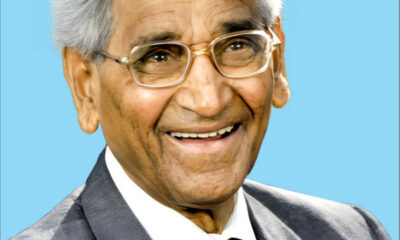
 Inspiration2 months ago
Inspiration2 months agoLife of My Father: Dr. Jagdish Gandhi, a Pioneer in Education
-
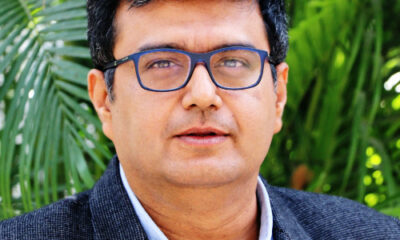
 Education3 months ago
Education3 months agoMayo College Announces New Leadership
-

 Education2 months ago
Education2 months agoPost-pandemic: Embracing Well-being in India’s Schools with My Guide Inside
-
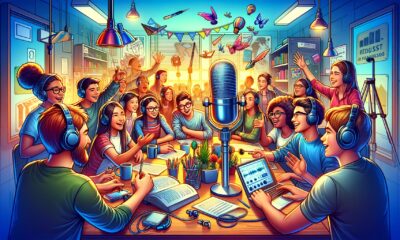
 Education3 months ago
Education3 months agoRadio Broadcasting in Schools: Creating a Platform for Student Voices
-

 Education2 months ago
Education2 months agoKerala Introduces ‘Water-Bell’ Initiative in Schools to Boost Hydration
-
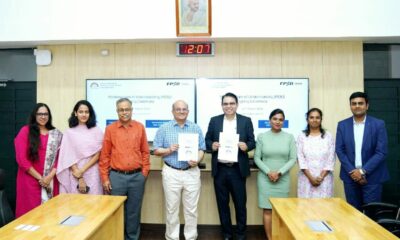
 Education1 month ago
Education1 month agoFPSB India and IIM Bangalore Forge Strategic Partnership to Advance Financial Education
-
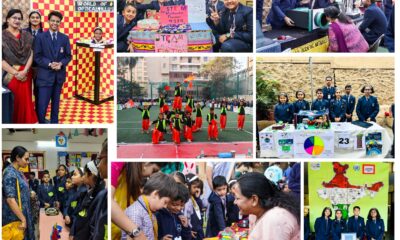
 Education3 months ago
Education3 months agoLexicon Schools Spark Innovation with STEAM Fest
-

 Education3 months ago
Education3 months agoAnticipating a Progressive Leap: The Education Sector’s Hopes for Union Budget 2024
-

 Education3 months ago
Education3 months agoThe Need to Preserve Newspapers for Bias-Free Education
-
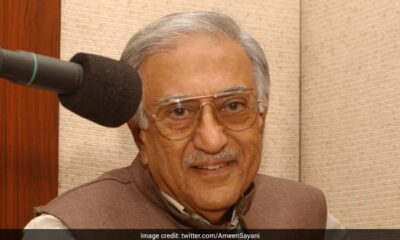
 Edutainment3 months ago
Edutainment3 months agoA Voice for All Ages: The Enduring Legacy of Ameen Sayani in Indian Education



